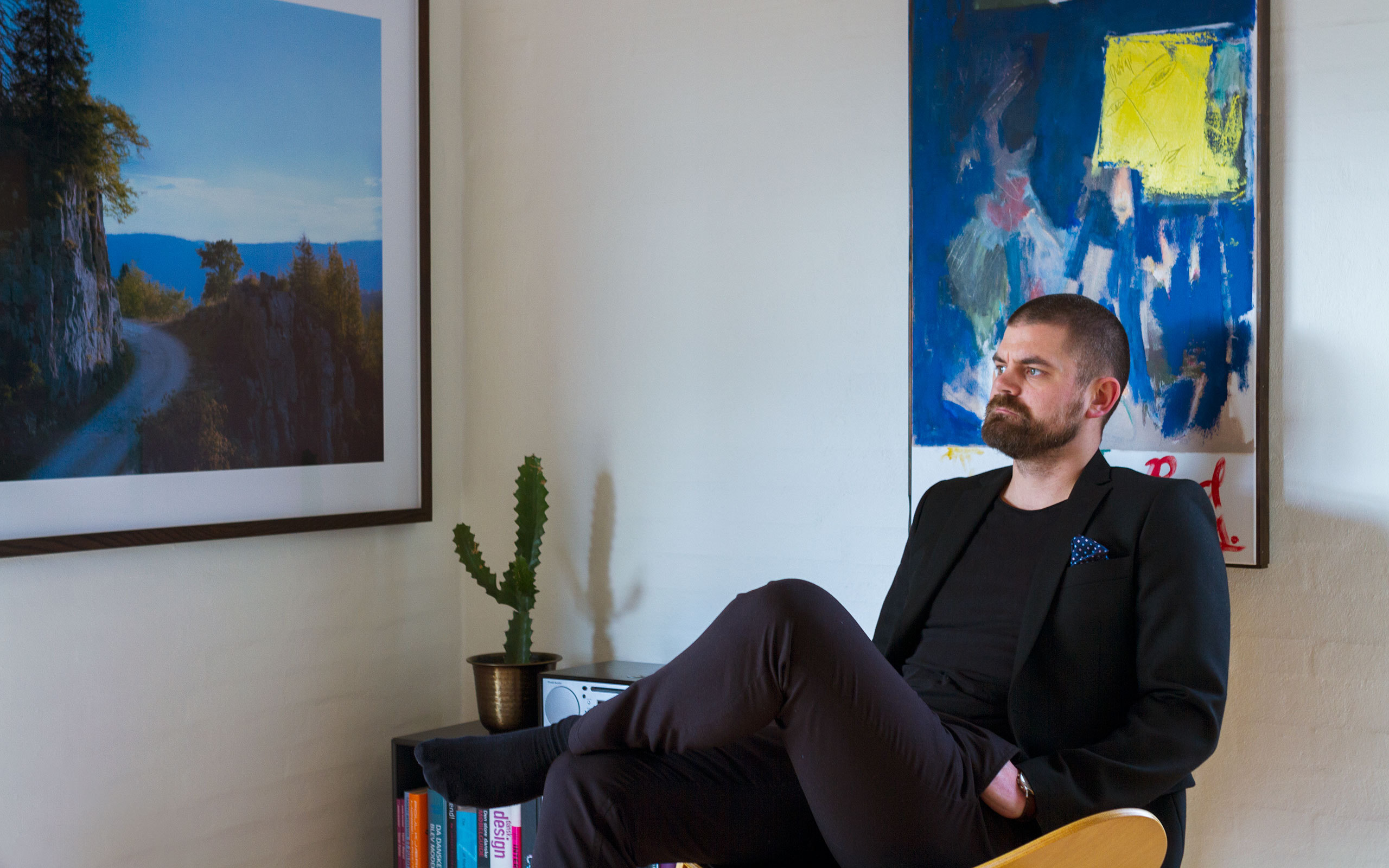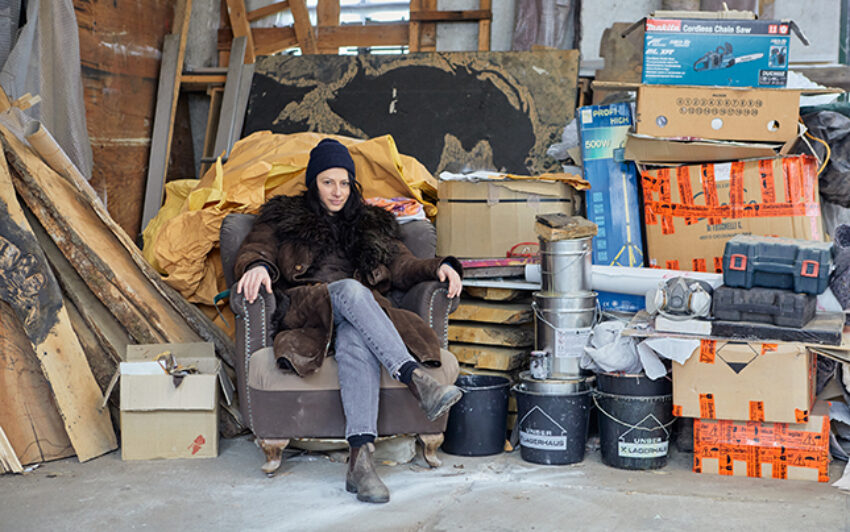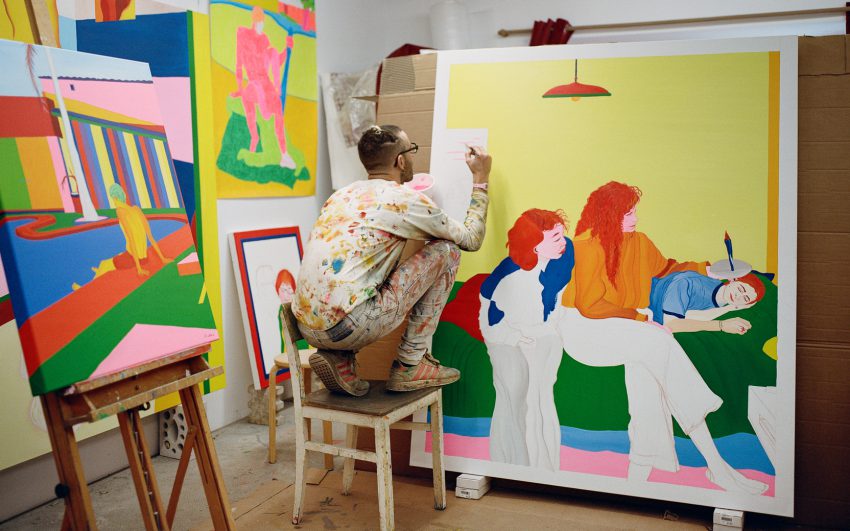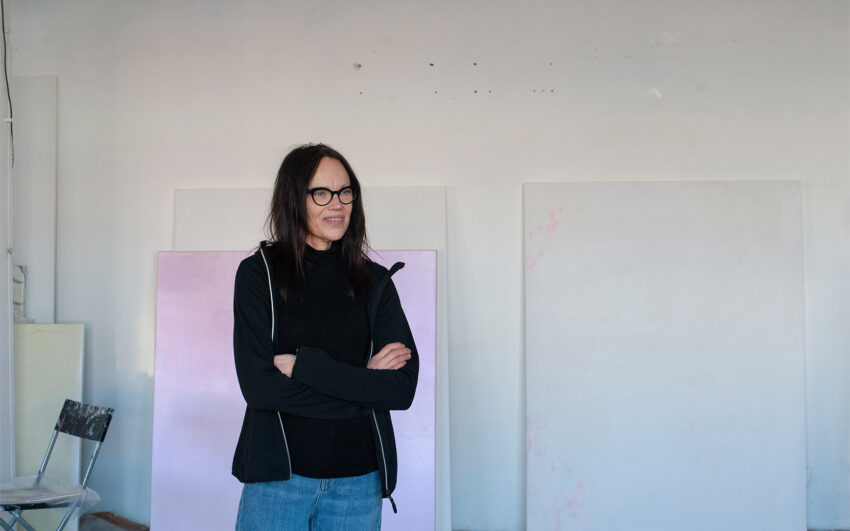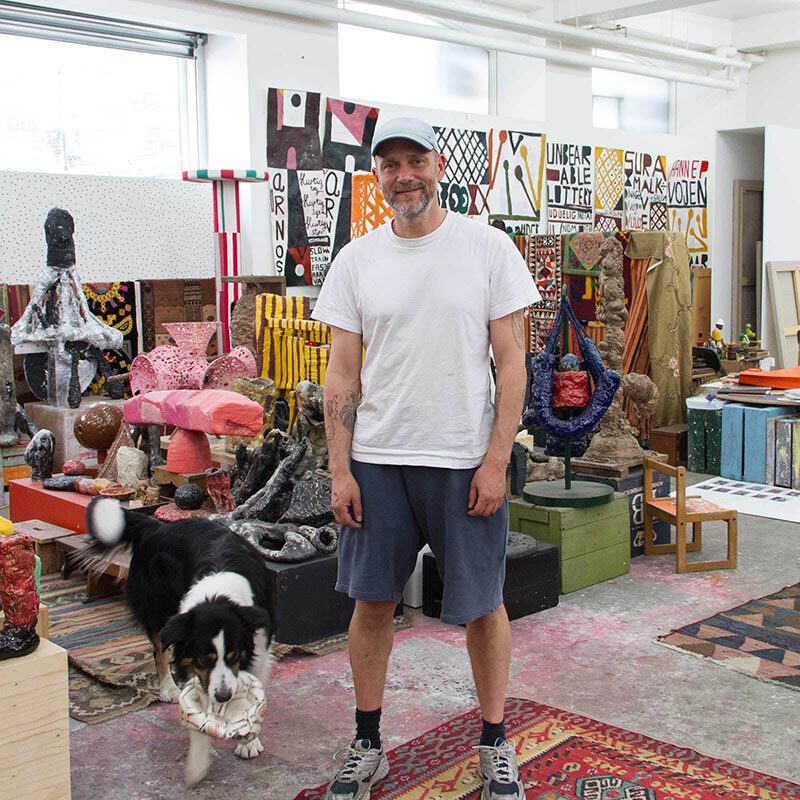The scene for contemporary art in Europe’s North is expanding and developing new dynamics as international collectors are watching the scene. With Nordic Notes we regularly cast the eye on the Nordic art and cultural scene, portraying its important actors.
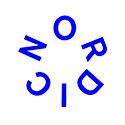
Claus Busch Risvig didn’t grow up with art, and yet, the Danish collector ended up devoting his life to it. Be it on social media or in real life, he shares his contemporary art collection with people from around the world, determined to initiate dialogue around art and show the rest of the world that collecting art is not just for the few.
Claus, you did not grow up with art. What sparked the turn towards this "bright new world"?
Since I did not grow up with art, it was not a world that felt natural for me to step into as a child. I faintly remember the obligatory field trips to museums back in primary and secondary school, but it was not until I met my girlfriend Stine and her family that art really became a constant in my life – a way of living. My parents-in-law are art collectors and their interest in art was a trigger for my passion. When Stine and I moved into a new apartment, we decided that we wanted to invest in a piece of art for the white walls, and that became the beginning of our collector’s journey. When art really took hold of me, I decided to embrace it with both my heart and my brain. I wanted to know everything about art, and so I went and borrowed every single art book in my local library to expand my knowledge on art history and through it have a better understanding of the legacy that contemporary art follows.
Having taken that plunge into the art world, can you describe what art is to you today?
There is so much humanity in art – moods, feelings, decisions, reflections, impressions, and expressions – both for artist and observer. Art arrived relatively late in my life, but today it is an essential part of my everyday life. My family life, my work life, and my network revolves around art, and to me it is like a magnet with an immense force of attraction. I feel drawn towards it, and I cannot imagine not being guided by it. It has gotten under my skin!
Today, you are among the youngest, most recognizable Danish art collectors. Not only have you grown a big collection in a short time, you have also grown a strong social media presence with more than 25.000 followers on your Instagram profile. How did this come about?
I started out as a greenhorn, who persistently tried leaning how to navigate the art scene, and a way of doing that for me was creating an Instagram profile exclusively focused on art. I had no strategy or goal of growing a large follower base. To me, it was a question of finding my own voice as a collector, and my Instagram profile became a sort of visual diary, where I could save and share the works that awoke emotions in me. Artworks and artists that I believe the rest of the world should acquaint itself with. It surprised me that my profile grew as quickly as it did. The fact that I have a platform where I can express myself visually adds an extra dimension to my collection. And there is no doubt that it has opened some doors to the art world and put me in contact with many interesting people, who have helped open up the art world to me, outside the Insta-moment on a phone screen.
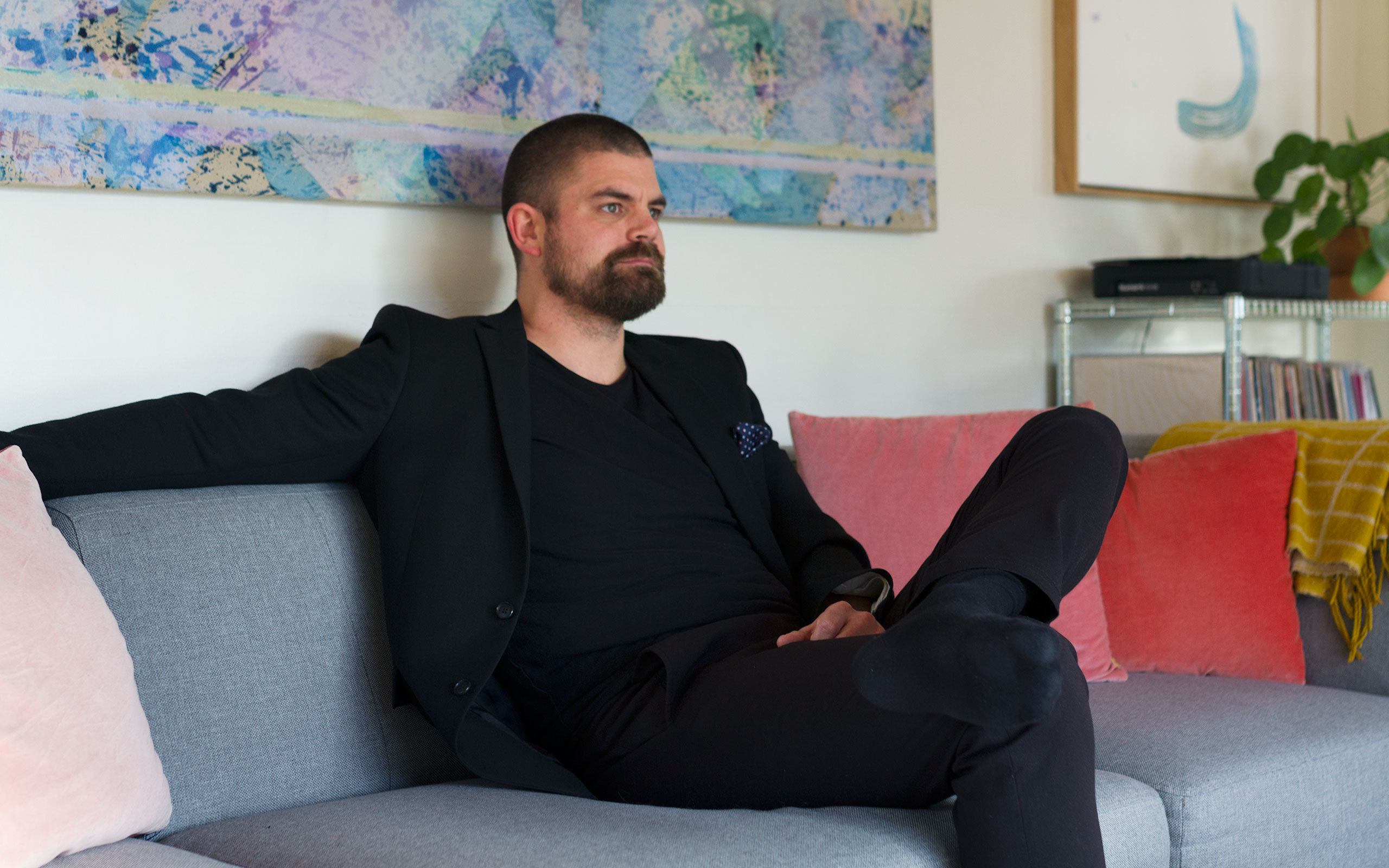
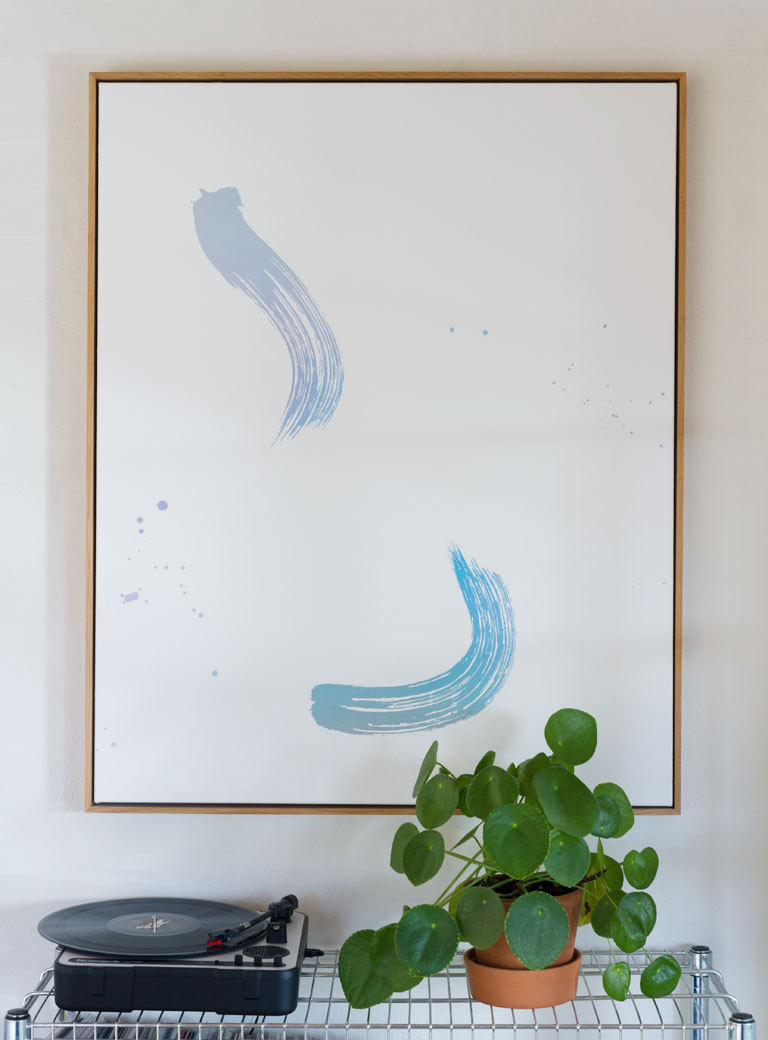
Do you experience any downside to social media’s entrance to the art world?
The constant stream of content can overwhelm or overstimulate you, so you have to be able to sort the content and avoid the hype of specific "trending artists". You have to look inwards and feel if the artist really resonates with your own style, or if it is just a passing sense of "I have to own that". Besides, it is primarily paintings that "work" digitally, so some artists risk being overlooked. Regardless of whether the artworks are two-or three-dimensional, it is essential to see them in real life – to seek out the art, go to fairs, galleries, studio visits, museums etcetera. Having said that, social media is a really nice opportunity to discover new artists and keep in contact with artists and collectors from around the world – a springboard to real life meetings, but never a substitute.
One of these real life meetings, initiated by your Instagram profile, was with Mattis Curth, the CEO of Artland, where you work as a fulltime community manager today. How did that come into place?
My presence on Instagram definitely had an influence on the fact that Artland’s two co-founders Mattis and Jeppe Curth contacted me. Based on their own experiences of the art world, they perceived a need to create a digital network, where collectors and gallerists have the opportunity to connect with each other, and where you as a new collector can receive the tools to understand and navigate the art marked. Therefore, they created the app Artland, which was launched in August 2016. The combination of technology and art has resulted in a global art community with thousands of collectors, galleries, and art lovers from all over the world. New relations arise in a brand new dimension of the art market, which relies on meetings between people in the virtual world, and this ultimately leads to an exchange of knowledge, art, and passion in the real world. The idea is not to replace the existing marked; it is to support it by giving its players the best conditions for development and improvement. In the development phase of the product, Mattis and Jeppe looked for people who know the art world thoroughly and wanted to provide insight by sharing their experiences. We met, and what started as a dialogue about the art marked and its challenges and potentials quickly developed into a permanent cooperation.
Can you tell about your role since you joined Artland?
As my job-title 'Community Manager' indicates, my job assignments are mainly to do with creating dialogue and act as a link between gallerists and collectors – to create value for our community. The great support from both collectors and gallerists shows a great demand to be a part of a community, to meet likeminded, and not least to expand one’s network – on an international level too. I believe there is a new generation of collectors, ready to embrace the digital age and the new ways of collecting it produces.
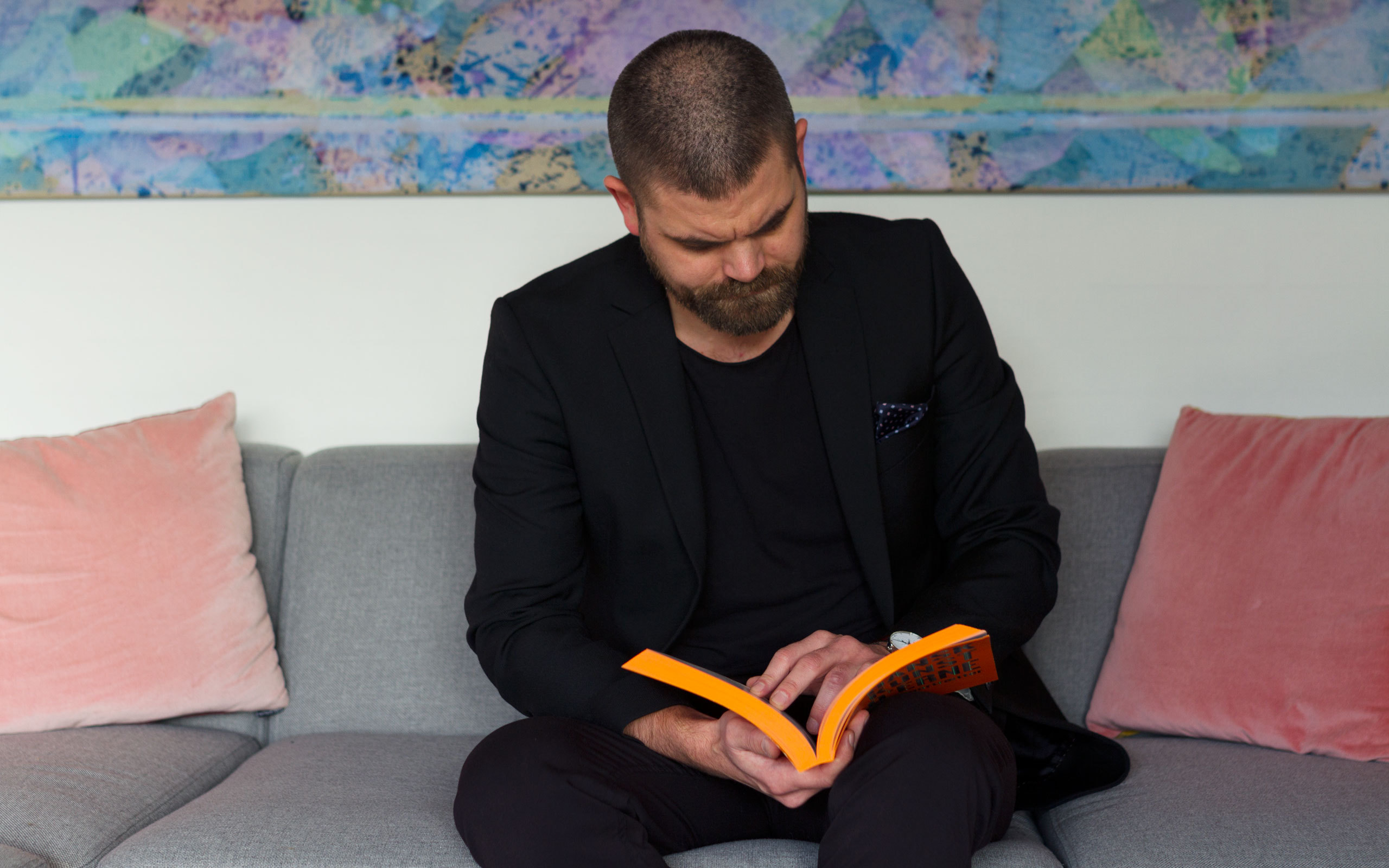
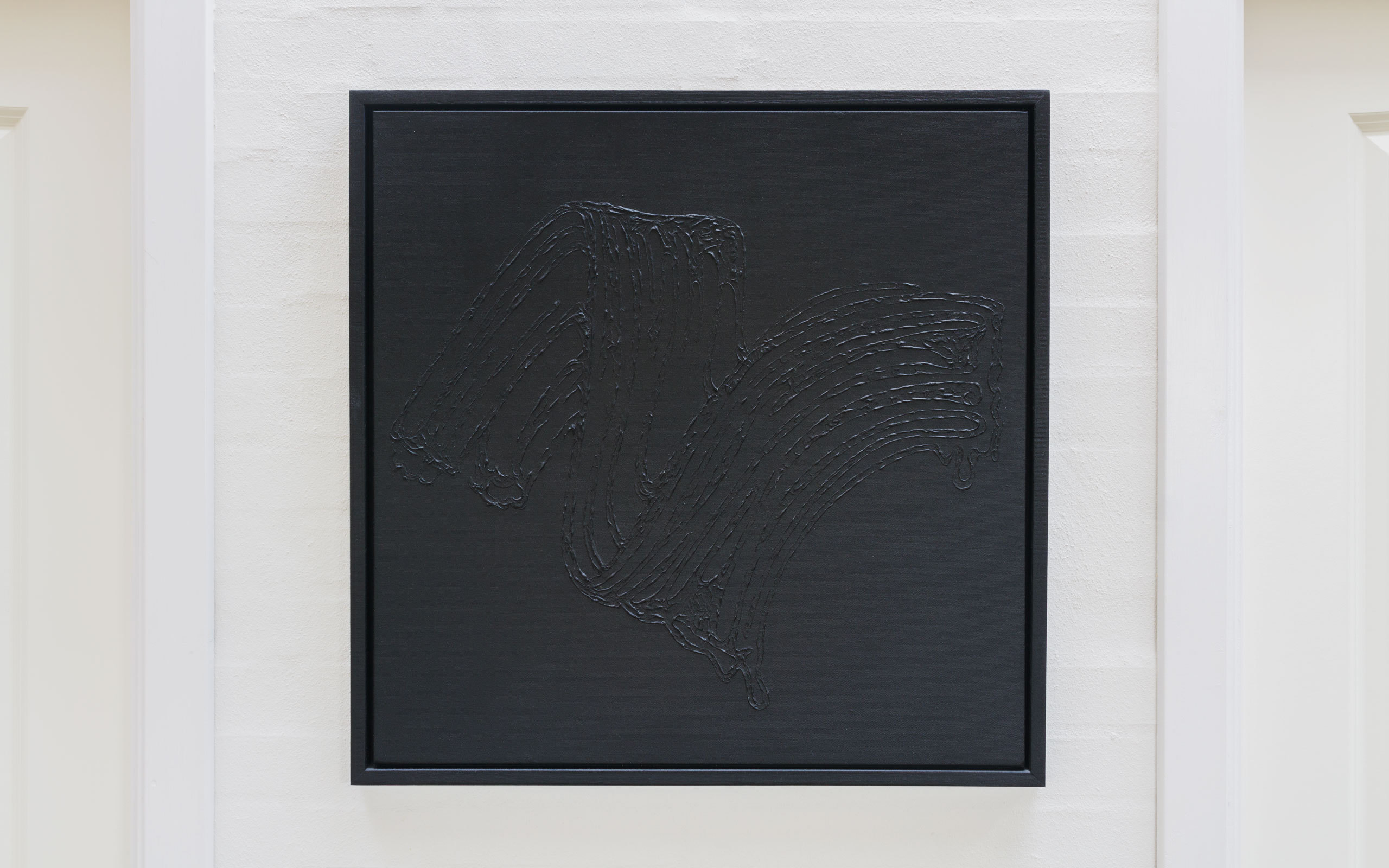
Would you tell us about your own collection, which revolves mainly around artists from your own generation?
My partner and I have been collecting artworks by emerging artists since the beginning. It provides us with an opportunity to follow their development in their career. Another reason is that they represent our own generation. It is more difficult to relate to artists of an older generation, since they have experienced different things, but through our generational relationship, we share many of the same frames of reference and can more easily identify in the themes that they work with in their art. They are our contemporaries. In addition to that, we have an opportunity to meet them, not that that is the most important thing to us, but the personal contact gives the artworks an additional dimension that supports our "being" in time with each other and provides us with an insight into a person’s creative process.
Other than the artists being mainly contemporaries, do you pursue a particular genre?
Not really. Moreover, our collection represents a bandwidth of genres – from abstract, conceptual, minimalistic, figurative, two-dimensional and three-dimensional artworks by both national and international artists. However, we do have primarily abstract and conceptual artworks in our collection, which I’m particularly drawn towards. The experience of seeing an abstract work leaves a lasting impression on me due to the fact that I can read into it exactly what I want. I feel that I will never be "done" with it. I can keep coming back to it and explore all the meanings again and again.
What kind of art usually catches your eye?
There has to be some friction that irritates my eye. It must not be too pretty. Instead, it must trigger something that will challenge and push me. I am not only driven by aesthetic, but in equal part the story that the artwork carries. For example, I am often preoccupied with works that have a political aspect. Works that comment on our current situation. I am not a member of any political party, but my choice of politically charged artworks are, perhaps, my way of expressing my political engagement with the world.
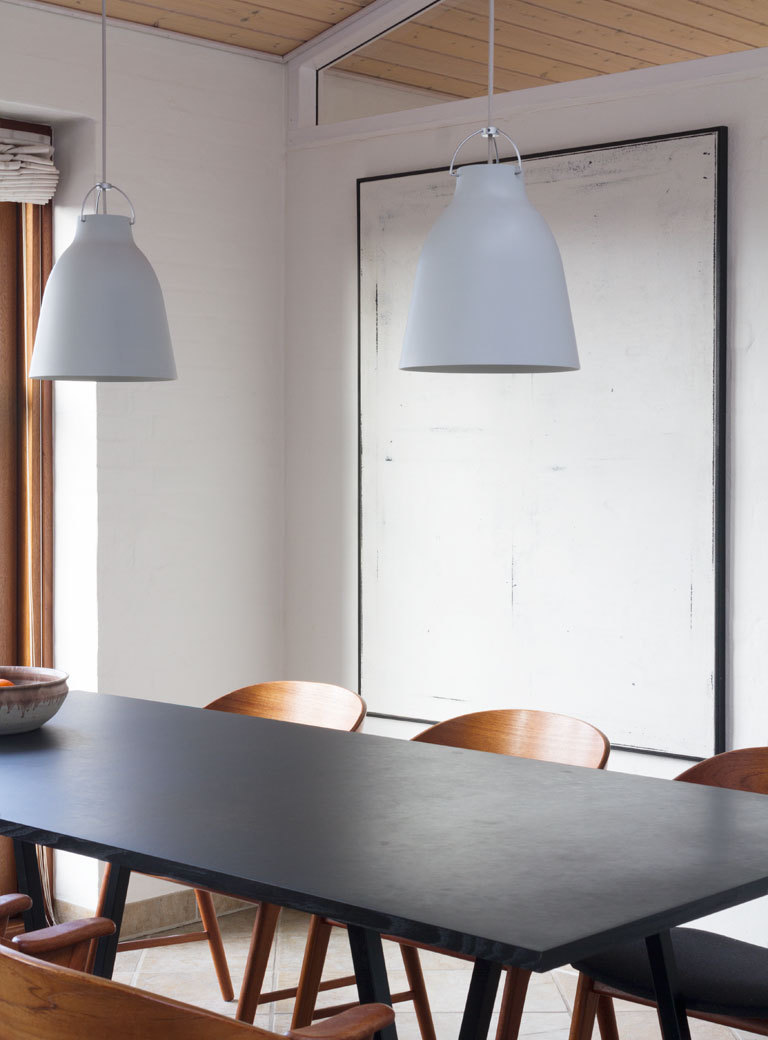
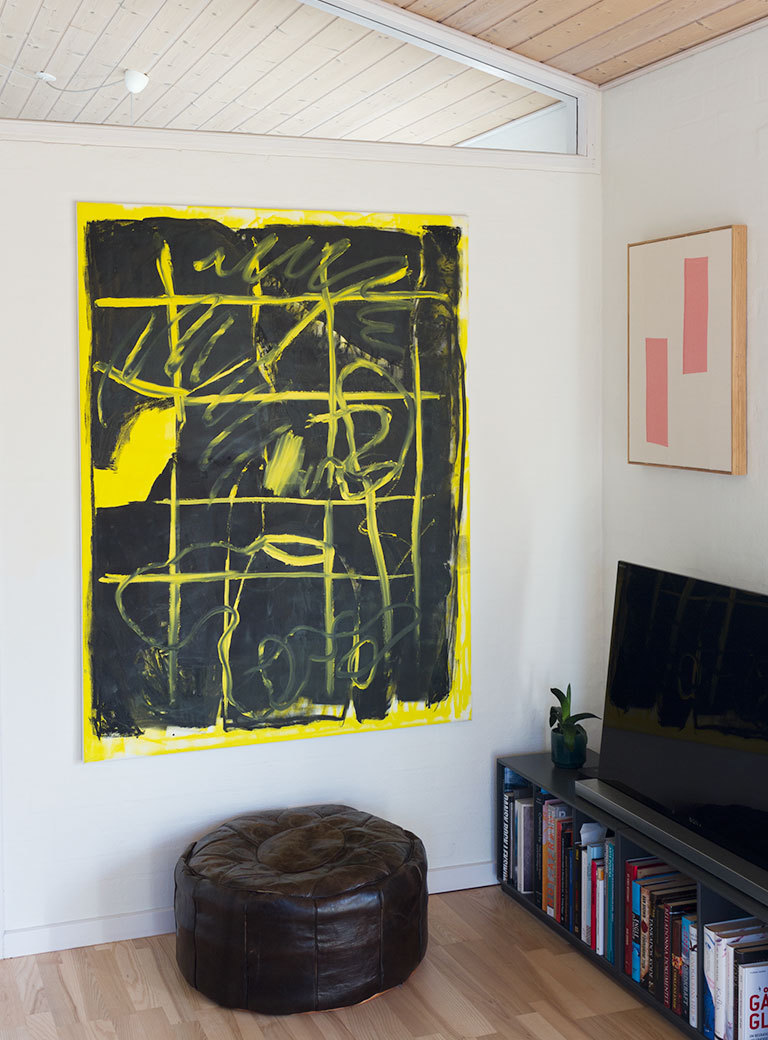
You are particularly into the Danish art scene. How do you experience its current state?
I think that the Danish art scene has developed tremendously in the last 10 years. It has growing international appeal with prominent artists such as Danh Vo, Sergej Jensen, Olafur Eliasson and Tal R, who help additionally promote the art scene with their international clout. We also see the rise of many interesting non-profit artist spaces that produce new frameworks for the creation of art. The arrival of the two prominent art fairs – Code Art Fair and Chart Art Fair – helps putting the Danish art scene on the world map. Similarly, more and more collectors travel to art fairs in foreign countries. Because of this, Copenhagen has, in my opinion, grown to be the art capital of Scandinavia, and I think that this position will only be strengthened in the future with more international collaborations.
And how about the future of the global art market?
You can feel a change coming in the market. Things are different than they were before, which, among other things, is a result of the digitalization that has led to new ways of displaying and sharing art. More galleries try to rethink their concept by inventing new ways of presenting and selling their artwork, for example digital exhibitions or pop-up spaces. It is easier to promote your art now than earlier – both as artists and as a gallery – and that will definitely have consequences. Frieze Art Fair has made it possible to apply for a booth on the fair, even if you do not have a single psychical painting, which supports the prevailing tendencies. This leads to striking changes concerning the art fair format. It is under pressure and eventually, I think that the market will satiate. Several of the numerous art fairs that take place every years will not be able to survive the competition, but will surrender to the "fair fatigue", which seems to exist. The collectors will be more selective and critical with regard to what exact art experience they want to have at a fair. This should not be misunderstood as an expression for a declining interest. On the contrary, with the political, social, and cultural deviations we experience in these years, the inclination to experience, collect and share your passion for art seems more prominent than ever.
Since the beginning, you have collected with your girlfriend. How do you collect as a couple?
We do not have any particular strategy. We are driven by feelings. Often, we see a work that is interesting, a work that makes us feel something. Then, we will research, reflect on it, and discuss the work together. What does the work say about us? Which feelings does it produce? Does it fit into out collection? We have a running dialogue – we both have to like it, so it really comes down to muting your ego. Often, one of us is slightly more energetic, wants the artwork a bit more, but it is always a collective decision. The purchase is always a result of our twosomeness, a collaboration, a mutual understanding.
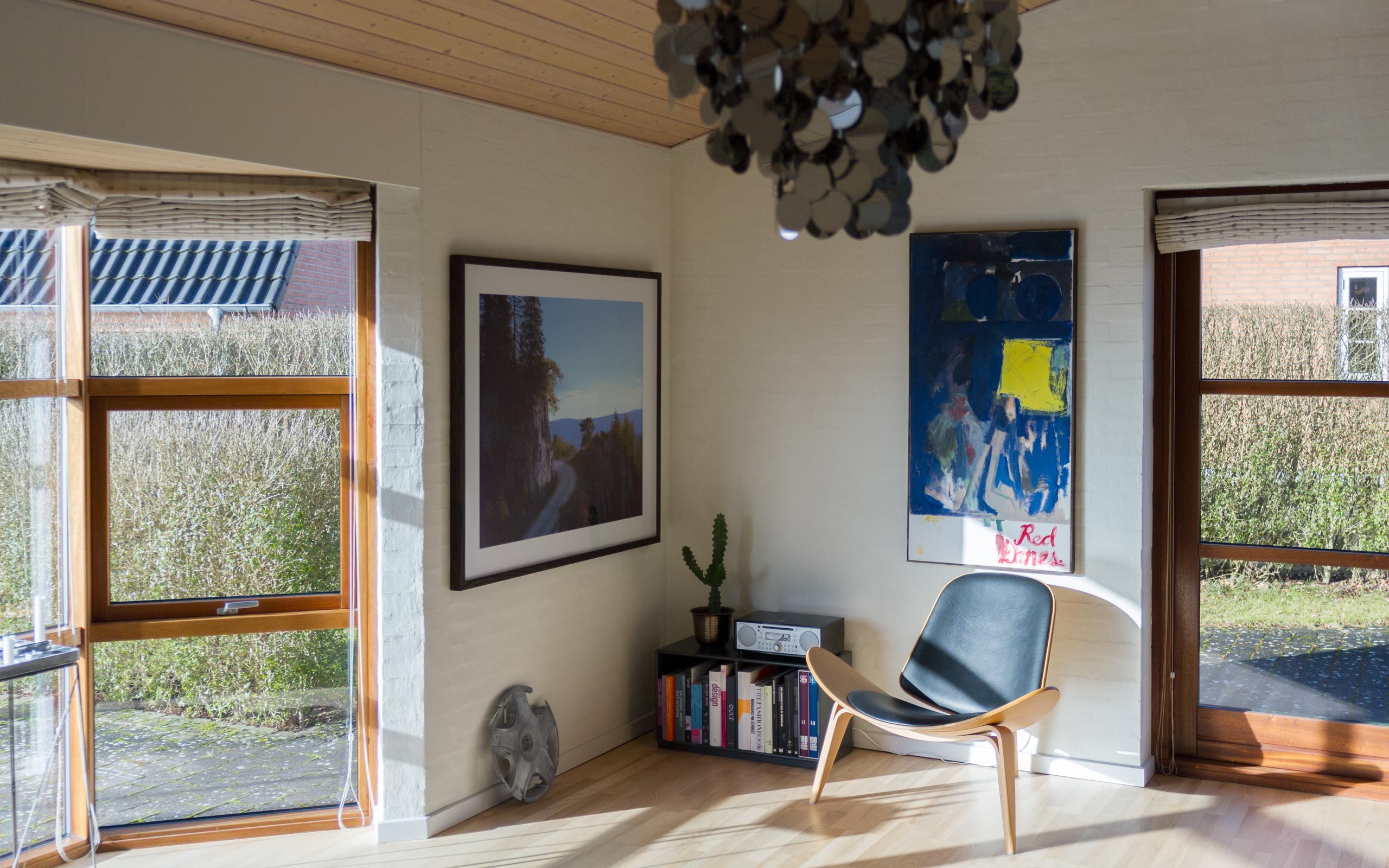
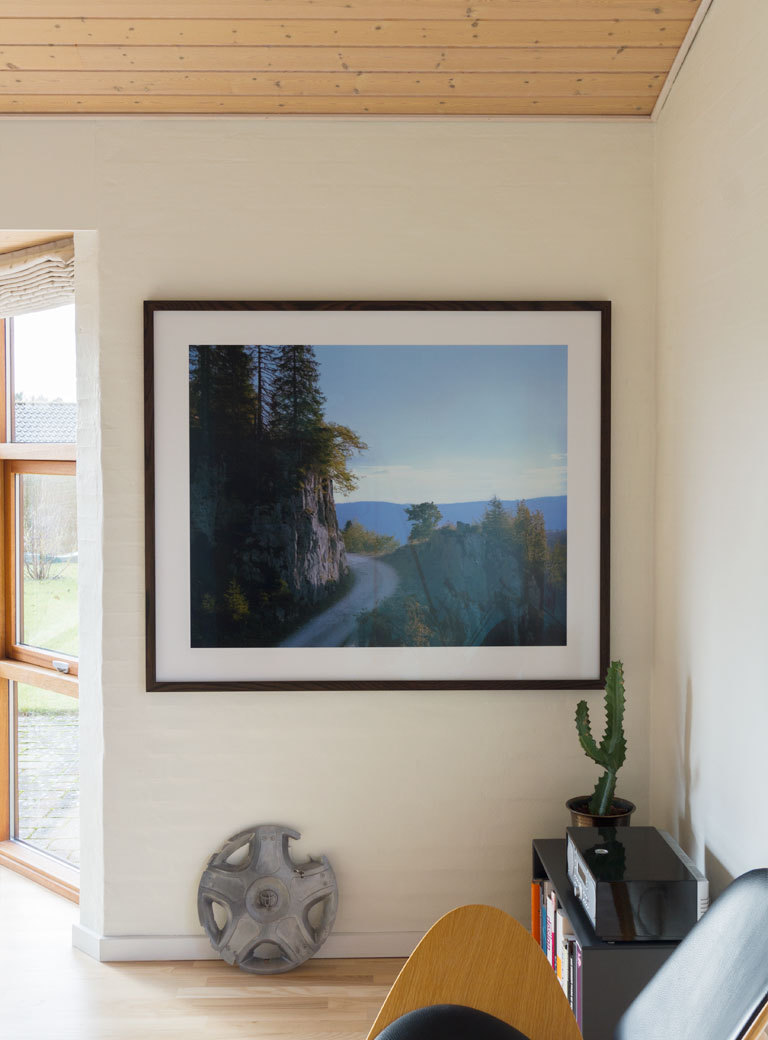
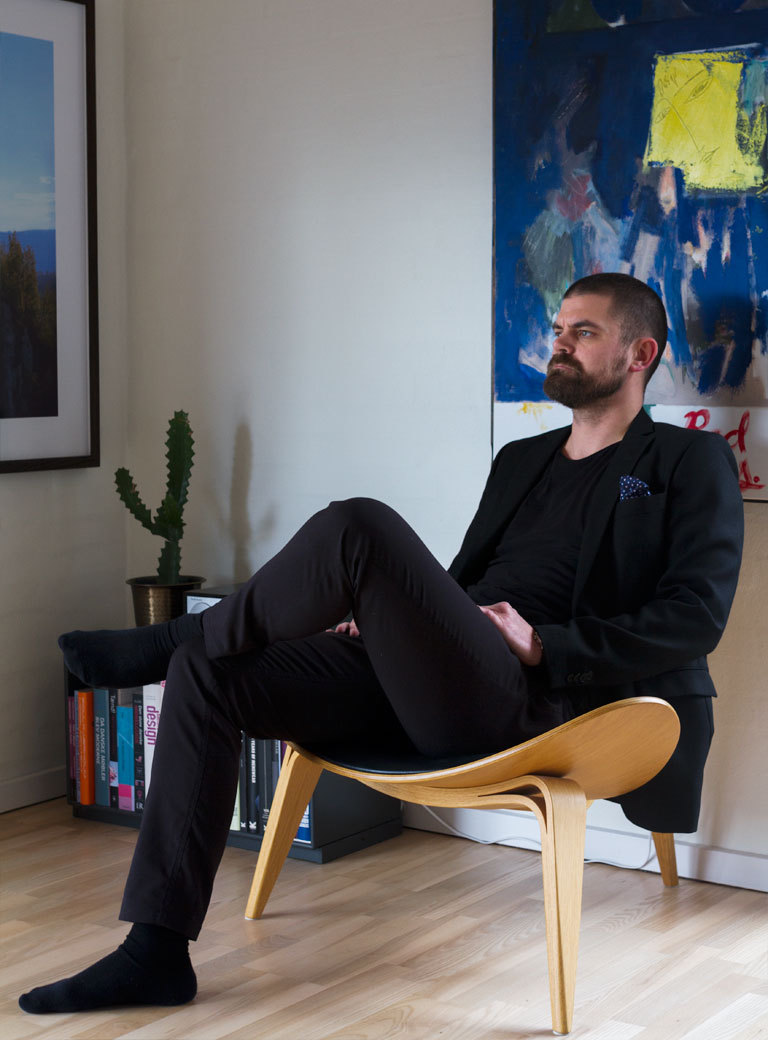
In the meantime, your twosomeness has expanded into a four-leaf clover. You have a girl aged three and your girlfriend has recently given birth to a boy. How would you like to see your children grow up with art?
I have not given the subject much thought, but I hope that they too will become interested in art. They do not have to become art collectors, but hopefully they will learn to treasure art when they get older. I hope that they will understand art’s great potential – not just as a channel of aesthetic, inspiring, insightful, different visual experiences, but also as a reckless comment on our society, which is able to challenge our ideas and perceptions and perhaps change our opinions. We gave our daughter Thit an artwork by the duo Hesselholdt and Mejlvang as a present at her naming ceremony. Not to force our passion for collecting art unto her, but as a way of adding a new chapter to our collective family history. In this way, the artwork will not only remain as a landmark of a special event in our lives, but also of the time in which my daughter was born.
Do you have a piece of advice to new collectors on how to get started and find their style as a collector?
I would say that the very best thing you can do – as a newbie or a seasoned collector – is to go out there and see a lot of art. Use your eyes, take it in, feel it, reflect upon it, come back, see it again. In other words, get started by going to a lot of exhibitions, both at galleries and museums. Also, try to read some books about art history. This will give you a good idea of which type of art you like and probably make the buying process easier. When you have fallen in love with a piece of art, remember to do your research. Try to find out everything you can about the artist, which galleries he or she is shown at, is he or she in any known collections etc. This will help you make the right decision.
Is there a practical and affordable way to lay the foundation to one’s own collection?
If you are about to buy your very first artwork, I would consider buying prints, which can be a great way to get started collecting. They are inexpensive compared to unique pieces of art and it is possible to get works from well-known artists that way. Finally, follow your gut feeling. You can get a lot of advice from people who have been in the business for many years, but ultimately, you are the one who is going to live with it. Most importantly, look inside and ask yourself: why does this work speak to me?
Clearly, your collection speaks to other people and not just to you. You have been exhibiting your collection publicly twice already.
The first time I exhibited my collection was in Huset for Kunst and Design (The House for Art and Design) in Holstebro, Denmark. I was the curator and chose to show a wide selection of artworks that, in many ways, are representative of contemporary art today. The second time was at Vestjyllands Kunstpavilllon (Western Jutland’s Art Pavilion) in Videbæk, Denmark, where I grew up. Here, I made a broad selection of artworks available to two curators who composed the exhibition in a cross-field between the modern art lounge and Modernism’s white cube.
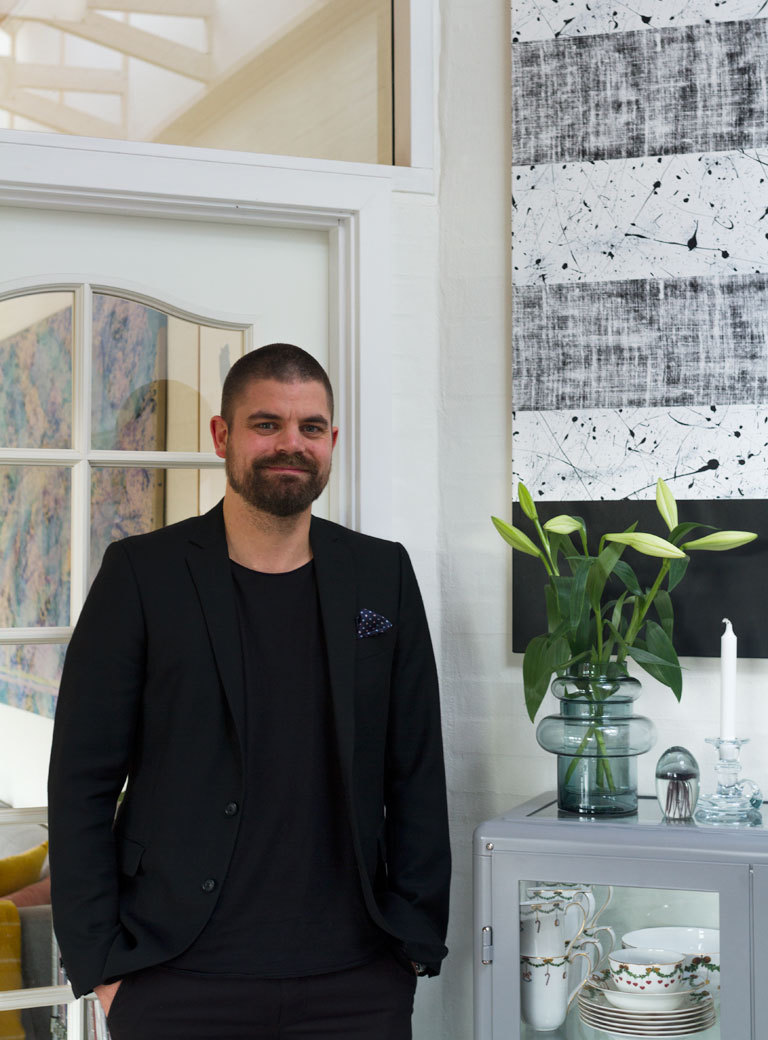
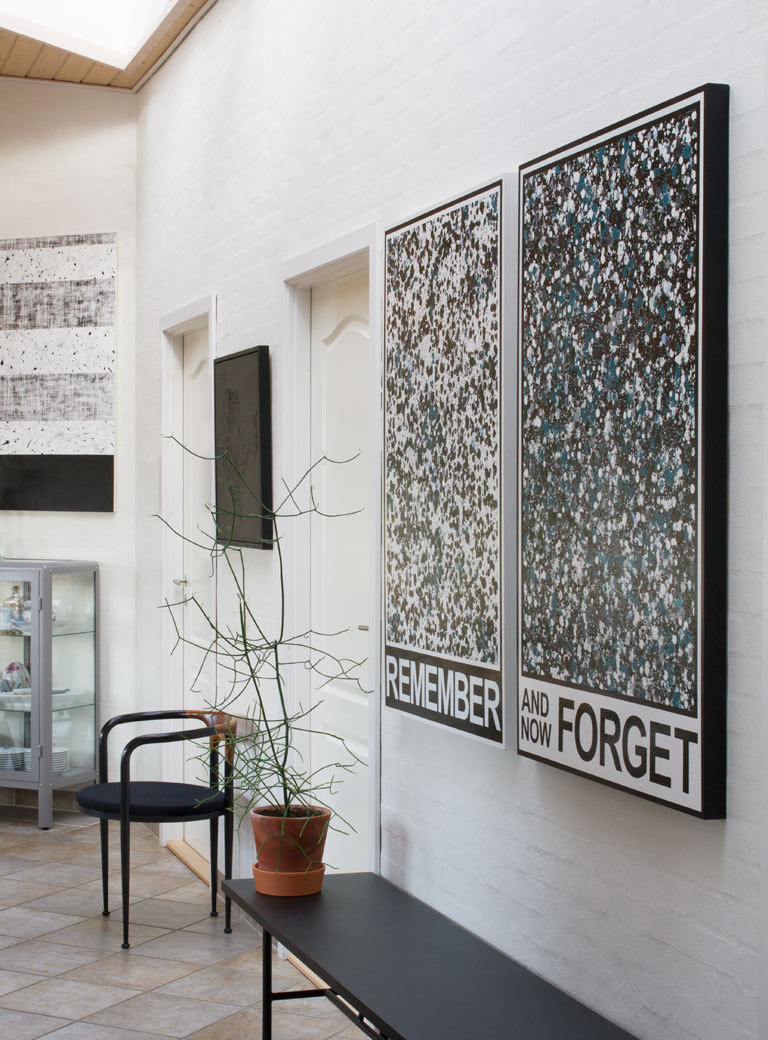
What does it mean for you to display your collection to the wider public?
To exhibit my collection is a way for me to give something to the art scene. It is interesting for me to see my works participate in a white cube frame put together in an entirely new way – and it is amazing to be able to show my collection to the public. As a collector, I feel compelled, in a sense, to show the surrounding world the artists that I represent in my collection, so that their artworks live outside the boundaries of my home. I hope that as a young collector, I am able to inspire other young people to see the value in collecting art and that it is definitely possible even if you are still young and do not have millions in your bank account.
Still, the art market has a reputation of being a playground for the elite with millions and millions circulating. What is your experience of this?
The art world is often perceived as being elitist when looked at from the outside. There is definitely some social codes practiced by certain collectors, and there are yearly transactions worth millions and millions of dollars. Still, I do not see the art world as elitist and inaccessible for the younger generations that I mingle with. My experience is that you meet as equals no matter what background you have. Sometimes I think the attitude to the art world has more to do with the presuppositions people have of the art market than it has to do with how it actually is.
A lot of newcomers feel somewhat intimidated to set foot into a gallery the first time.
It's true. It can seem intimidating, but basically the gallerists have an item that they want to sell, so of course they are interested in new customers. For example, my partner and I were welcomed by Charlotte Fogh Gallery, when we bought our first work. Besides guiding us properly with regard to our purchase of the work, she introduced us to many people in the art market. Many galleries want the young people and will welcome them warmly, so there is definitely no reason to worry about setting your foot in a gallery. Let the past stay in the past and leave the presuppositions behind. Take the leap and visit a gallery, buy that artwork and feel the rush. Then everything else will be secondary!
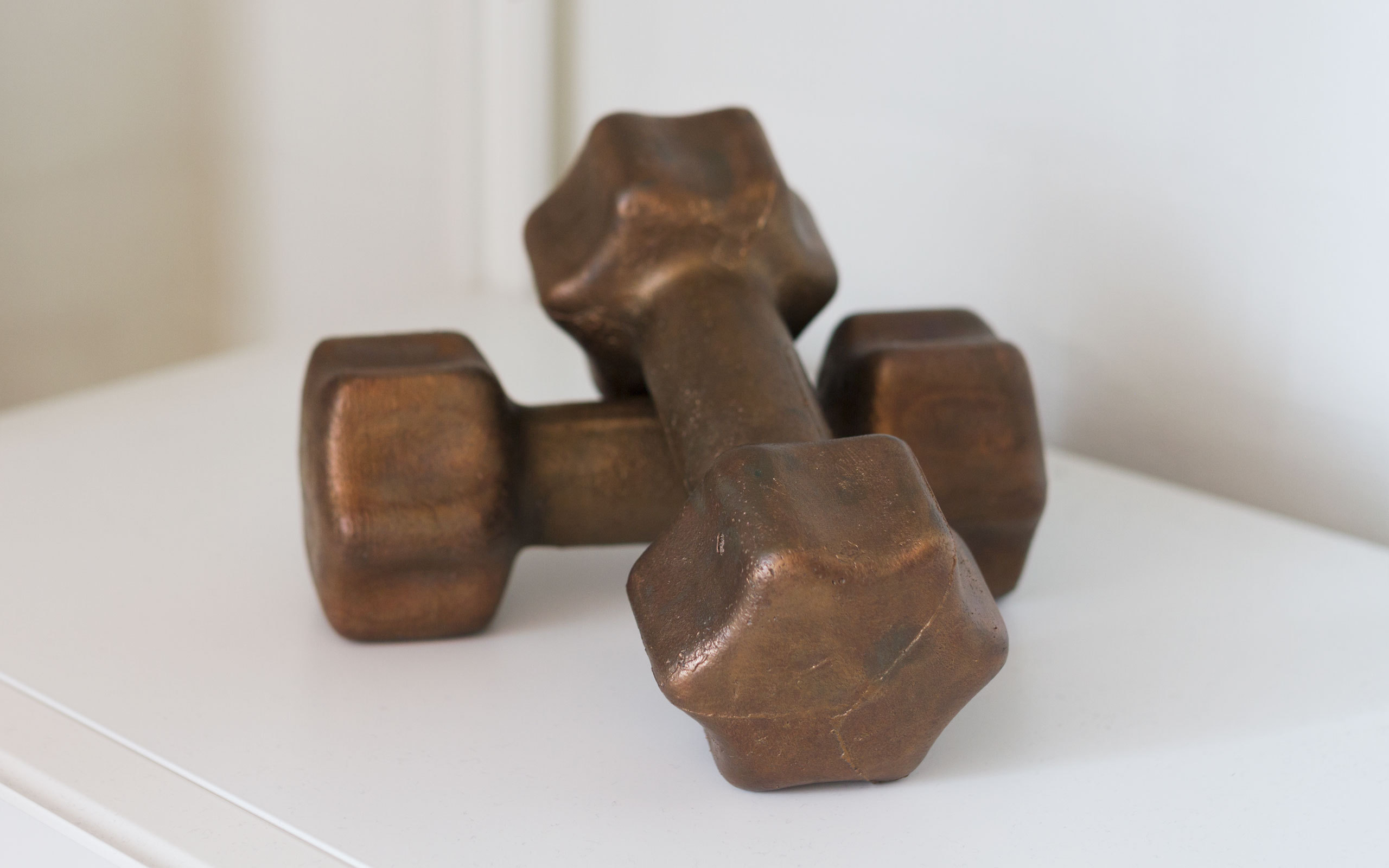
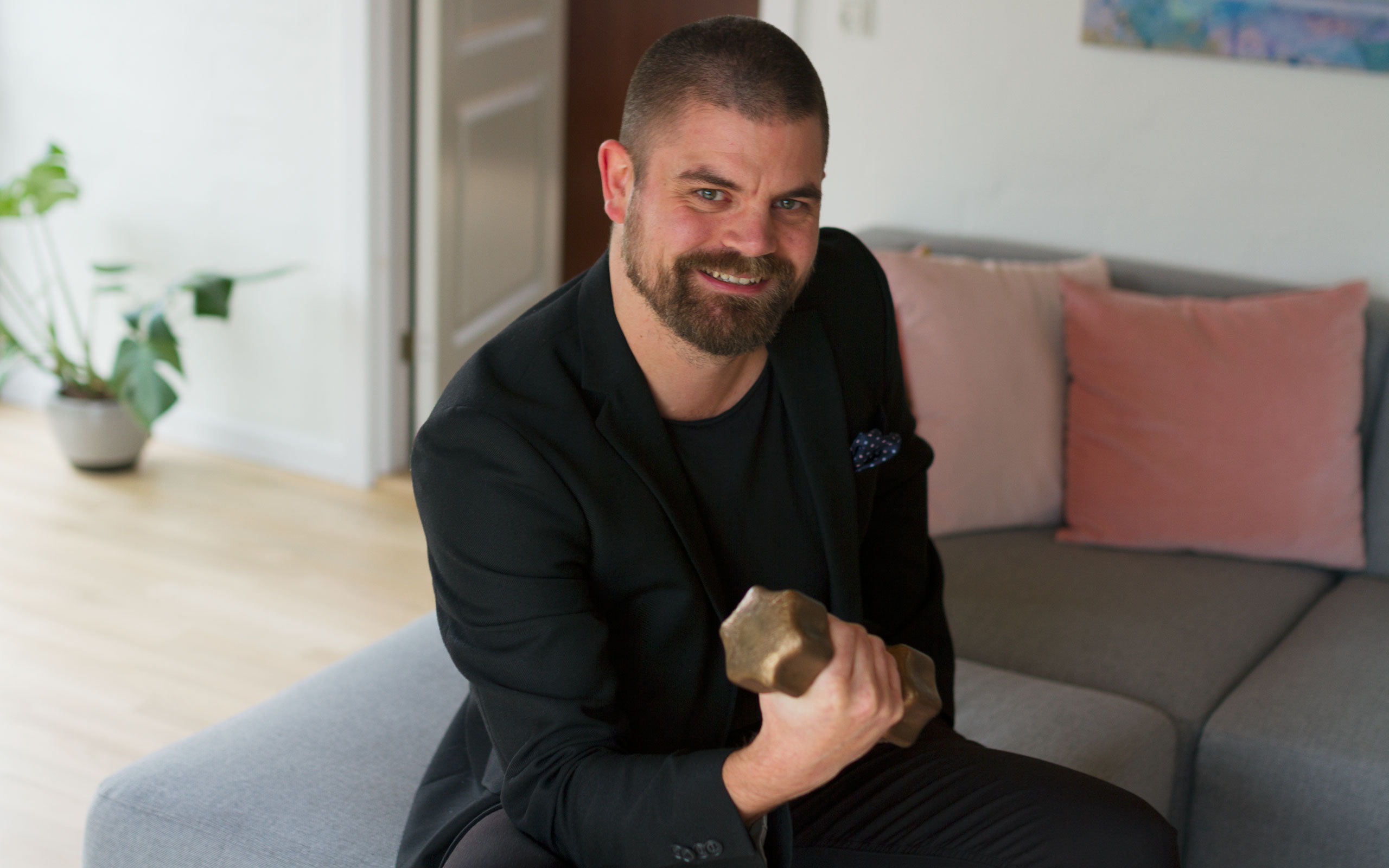
Interview: Anne-Lill Brok
Photos: Luna Jensen
We have teamed up for this story with our friends from Artland, an app to discover contemporary art and to connect with a community of collectors and galleries worldwide.


